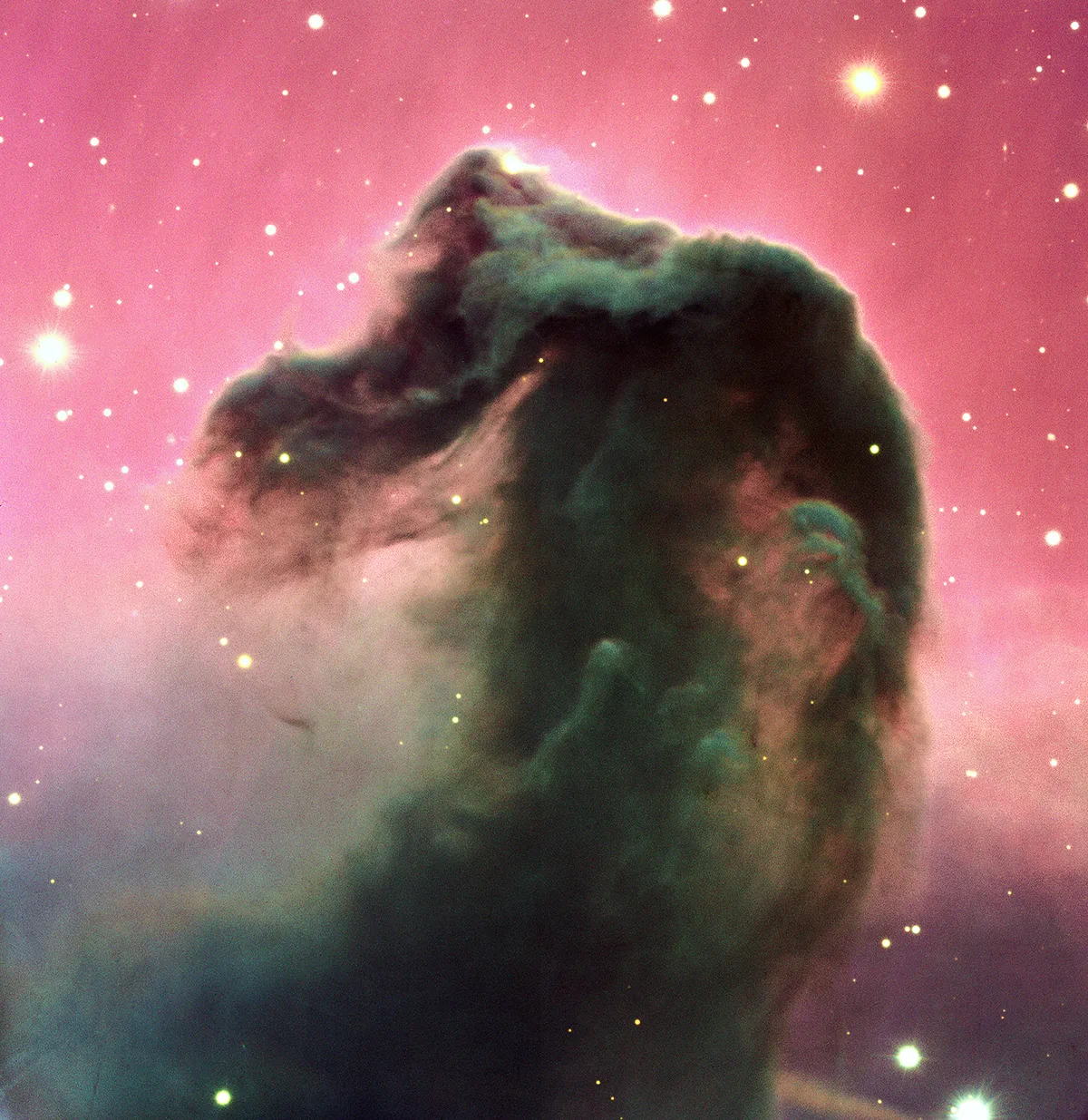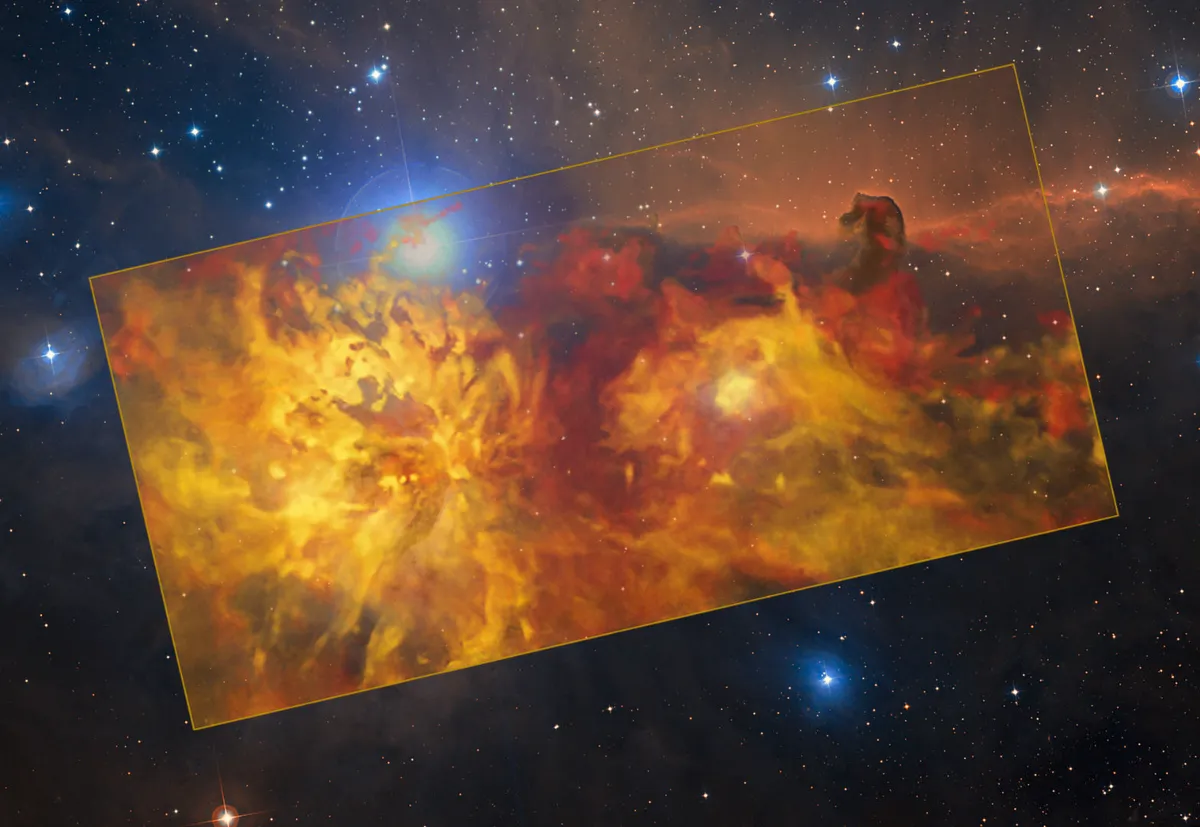The Horsehead Nebula is one of the most famous deep-sky objects in astronomy.
It's located in the constellation Orion and is formed out of a dense cloud of cosmic dust known as a dark nebula.
This dark cloud blocks light coming from emission nebula IC 434, revealing the shape of a horse's head, not dissimilar to a knight chess piece.
But as we know, nothing lasts forever. So how long before the Horsehead Nebula no longer looks like a horse's head?

Horsehead Nebula's structure and demise
Imagine a swarm of bees in the shape of a horse’s head. How long it stays in this shape depends on the motion of the individual bees that make up the swarm.
The bees might all be flying about randomly at some typical speed or there might be some ‘bulk motion’ in the swarm, with one part heading in one direction at a particular speed relative to another part heading in quite another direction.
Whichever speed is greatest will determine how quickly the horse head shape is smeared out.

Let’s say – and this is a guesstimate – that the outline is blurred out enough for the horse’s head to be unrecognisable when the average bee has flown a quarter of the distance across the swarm.
Now consider the Horsehead Nebula. Its bees are its molecules – mostly hydrogen – and the particles
of opaque dust responsible for blotting out the stars behind the nebula and making it appear black.
Their random velocity is determined by the temperature of the nebula, which is about –261ºC.
A hydrogen molecule at this temperature moves at about 0.3km/s, while a dust grain, which is considerably bigger than a hydrogen molecule, moves a lot more sluggishly.

So much for the random velocity within the nebula, what about any bulk motion?
Well, the Horsehead Nebula is part of the giant Orion Molecular Cloud, a stellar nursery about 1,500 lightyears from Earth.
Stars are being born all the time and their stellar winds are causing much turbulence within the cloud.
Observations of the molecule carbon monoxide – the second most common interstellar molecule after hydrogen – reveal bulk motion between different portions of the cloud as high as about 5km/s. This is the key velocity.

The Horsehead Nebula is about 5 lightyears tall. So how long would it take gas travelling at 5km/s to span a quarter of this distance?
The answer is about 100,000 years – a relatively short time on a cosmic scale. We are therefore very lucky to be around to see the Horsehead Nebula!
If you have any images of the Horsehead Nebula, we'd love to see them! Email us at contactus@skyatnightmagazine.com

